10 summertime plants that are toxic to dogs
(STACKER) — The sun is shining, the weather’s warm, schools are out—it’s time for some summer fun! For folks with canine companions, summer means more time outdoors. From long walks through shady spots to days at the beach or the lake, time outside means more sunshine for everyone—a welcome relief after those dreary winters that can get pet parents and their wards down too.
Whether or not your dog experiences winter blues, summertime brings more sunlight, heat, and physical stimulation. This seasonal change brings positive and negative possibilities—on the plus side, there’s more vitamin D, more exercise, and more time together. Moreover, most dog parents know some of the summer dangers to watch for, like overheating, dehydration, hot pavement on the paws, and sunburn (yes, dogs need sunscreen too).
Something often disregarded until you’re on the way to the vet, though: toxic outdoor plants.
Many species of wild plants, including familiar trees, shrubs, and flowers, can be poisonous to dogs. When ingested, symptoms can range from mild discomfort and gastro troubles to convulsions and death. Most people with dogs take care to eliminate harmful houseplants but often overlook the plants their furry friends might encounter outside.
So you’re prepared for your next foray outdoors, Ollie researched summertime plants that are toxic to dogs and created a field guide for 10 of the most common ones to avoid this season, using research from the American Society for the Prevention of Cruelty to Animals, American Kennel Club, and scientific studies.
Should your dog eat one of these plants—or even if you suspect they might have—call your vet or emergency pet care facility immediately and do as they advise. Also, save a piece or take a picture of whatever plant might be the culprit so it can be identified.
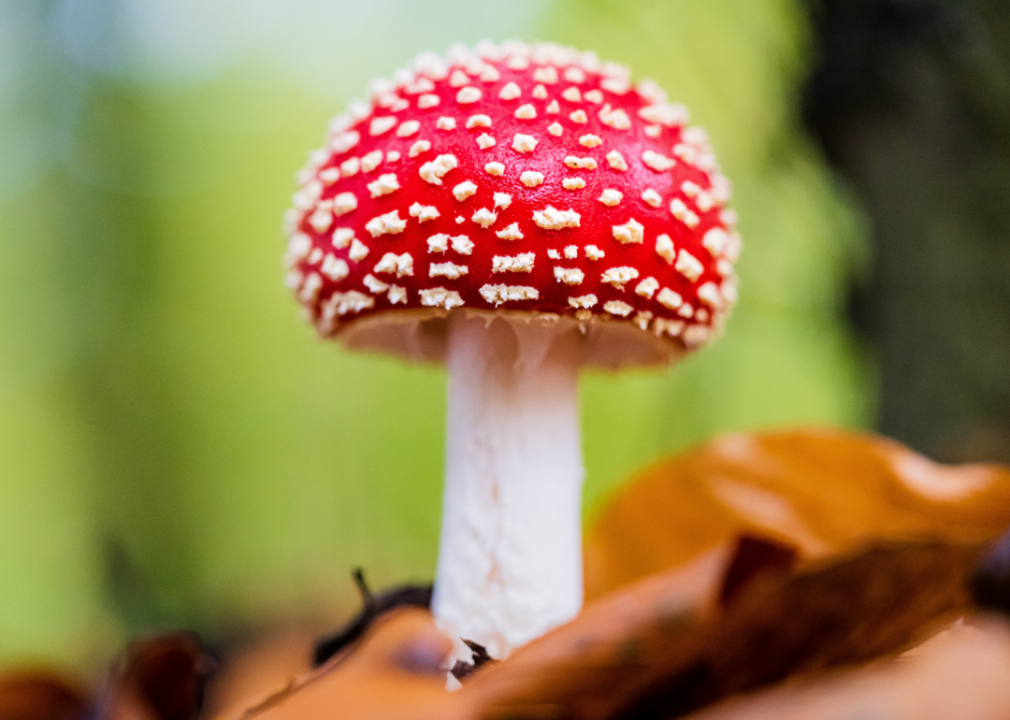
Canva
Amanita mushrooms
While adorable as a design motif—and mushrooms have certainly been having their moment in fashion—this genus of mushrooms includes both poisonous and edible species. While not deadly in humans, two particular species, Amanita muscaria and Amanita pantherina contain toxins that can be lethal to dogs. Largely found in wooded areas where the mushrooms flourish beneath hardwood trees, they appear across in the summer and early fall and look like something out of Mario Kart.
Amanita muscaria, more commonly called fly agaric, have red or orange caps, and Amanita pantherina, or panther caps, have a similar toadstool shape. It’s important to be able to identify the mushroom when seeking medical assistance, so be sure to snap a picture or collect a sample to show to the vet if you suspect your pet has ingested some.
The North American Mycological Association also tracks mushroom poisonings through its website. Should you be involved in an incident, consider adding it to the registry to benefit others in danger of encountering a similar experience.
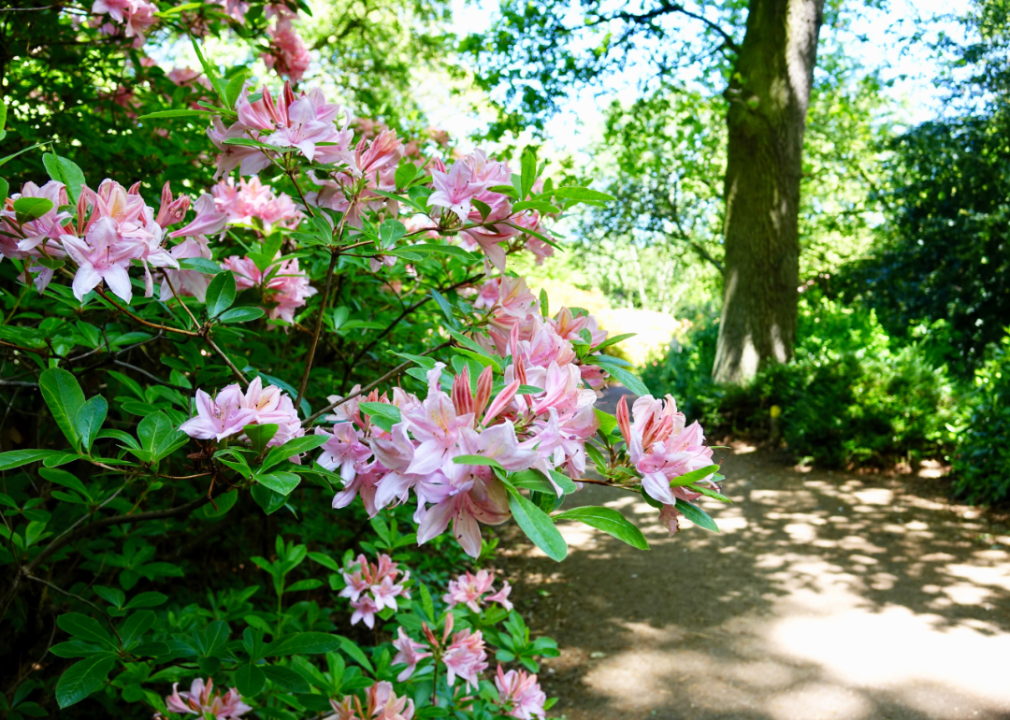
Canva
Azaleas, otherwise known as rhododendrons
The showy, flowery azalea, a species of Rhododendron, is much beloved as an ornamental shrub in the South, but it—like all rhododendrons—is highly toxic to dogs. It’s not just the bright flowers that cause trouble: all parts of the plant are poisonous.
According to the Pet Poison Helpline, ingesting as little as 0.2% of the dog’s weight can cause problems. Within a few hours after eating any part of the plant, the dog might have digestive problems, drooling, diarrhea, weakness, stupor, paralysis, or a weak heart rate. If any of these symptoms develop, contact a vet or the ASPCA Animal Poison Control Center.
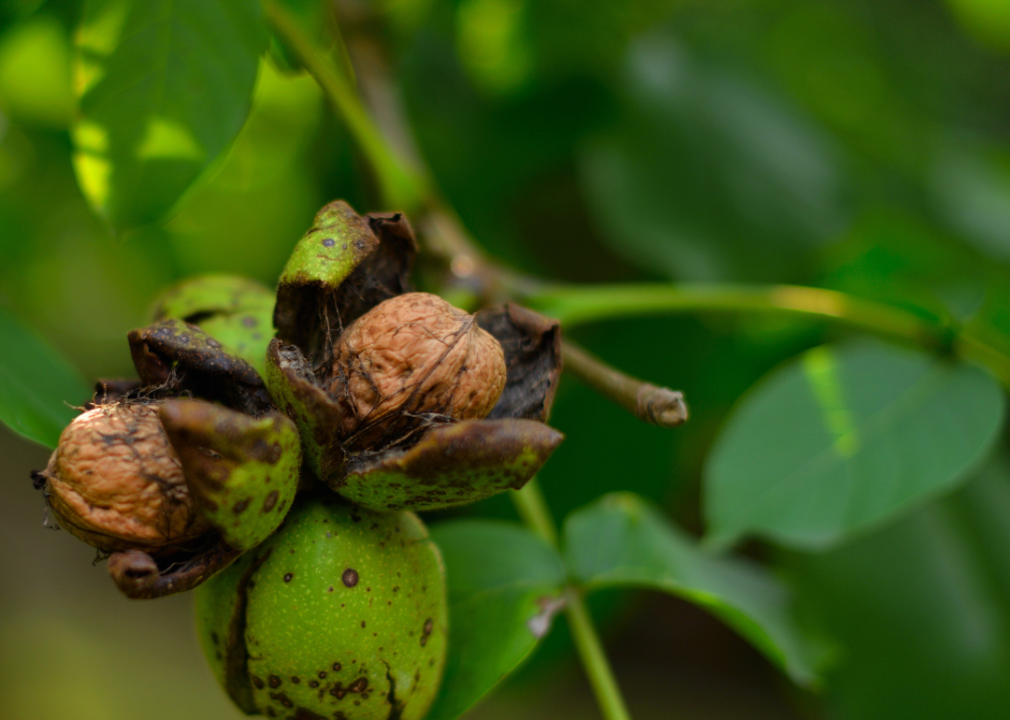
Canva
Black walnuts
Growing across the central and eastern U.S. in forests and floodplains, this beautiful hardwood tree has a toxicity that can be lethal to dogs should they ingest its leaves, wood, nuts, or shells. Though the nuts often fall in autumn, their remains can still be found in the summer, especially the moldy husks encasing the nutshell. These might seem like wonderful playthings to a dog, but as Outdoor Life magazine points out, they can be full of mycotoxins that cause neurological damage. Other signs of black walnut poisoning include panting, drooling, foaming at the mouth, fever, seizures, and muscle tremors. Seek treatment immediately.

Canva
Daffodils
These cheerful harbingers of spring might be lacking their blooms by summer, but unfortunately, their toxicity is still present in the plant’s bulb planted underground. Daffodil bulbs contain lycorine, a substance toxic to dogs that is also in Amaryllis and lilies.
Symptoms of ingestion include vomiting, excess saliva, diarrhea, convulsions, tremors, low blood pressure, and irregular heartbeat. If you spot your dog digging around where you know daffodils are, ensure they aren’t eating anything—even just skin contact can cause irritation, pain, swelling, and blisters. If you discover a dog has ingested or played with daffodils, contact your veterinarian or animal hospital.
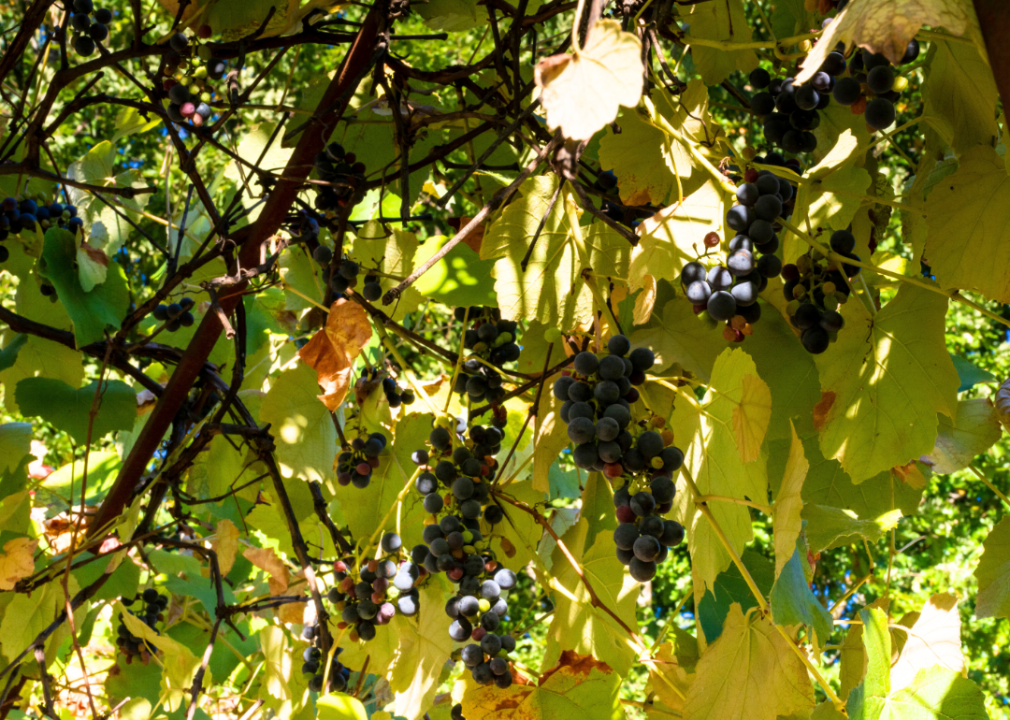
Canva
Grapevine
It’s now well known that grapes are highly toxic to dogs and can cause kidney failure, so avoiding the woody vines from which the fruit grows makes sense. Not only can dogs find grapes there—or on the ground nearby—but there may or may not be the same toxicity in the vines.
Research is still being done to determine if the plant is harmful or just the fruit. Still, the toxic component within grapes that does so much damage to dogs has been identified as tartaric acid, which is also found in tamarind and cream of tartar—the latter is often used in homemade playdough recipes, so be sure to keep it away from dogs as well.
Even if your dog only consumes a small amount of grapes or grapevines, immediately contact your veterinarian or animal hospital. Dogs deal differently with exposure; for some, ingesting grapes can be fatal.
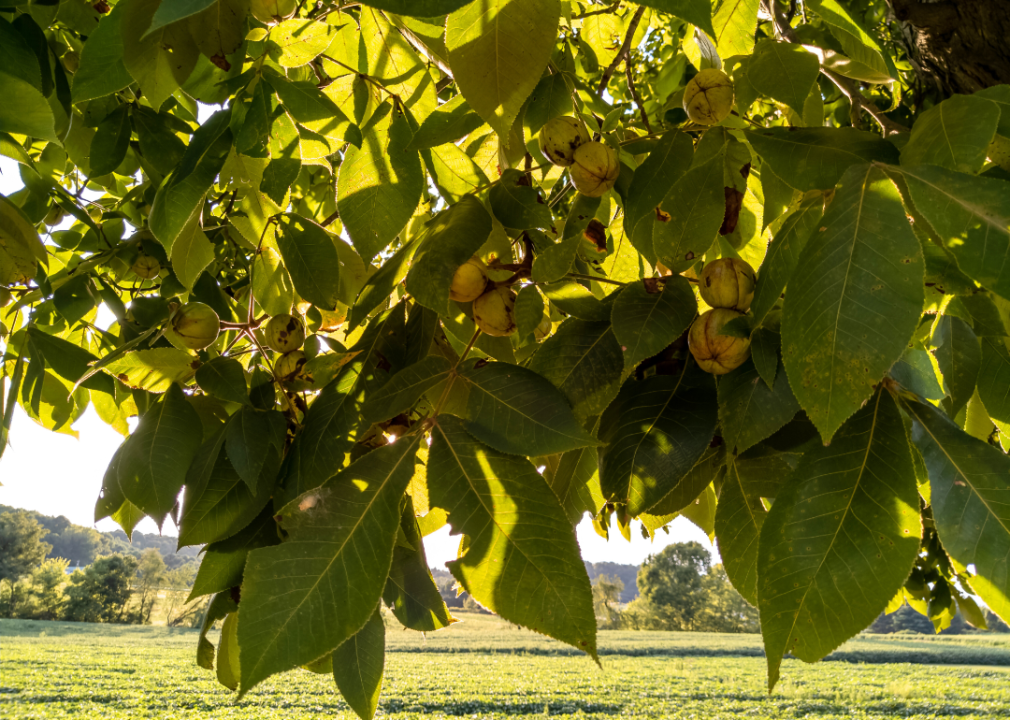
Canva
Hickory nuts
A good rule of thumb is to keep dogs away from playing with acorns and tree nuts of any kind. Some, like acorns and hickory nuts, contain dangerous toxins; others found in the wild might be nontoxic but still pose choking hazards or can cause intestinal blockages when ingested.
Hickory trees, found in forests and fields in the eastern and southern U.S. and Canada, contain a toxin in the leaves, wood, and nuts called juglone, so they should be avoided. Though the nuts typically fall in the late summer and early fall, your dog might be tempted to pull them off the branches on those summertime frolics through the forest. If they do, take the nut away before it can be eaten.
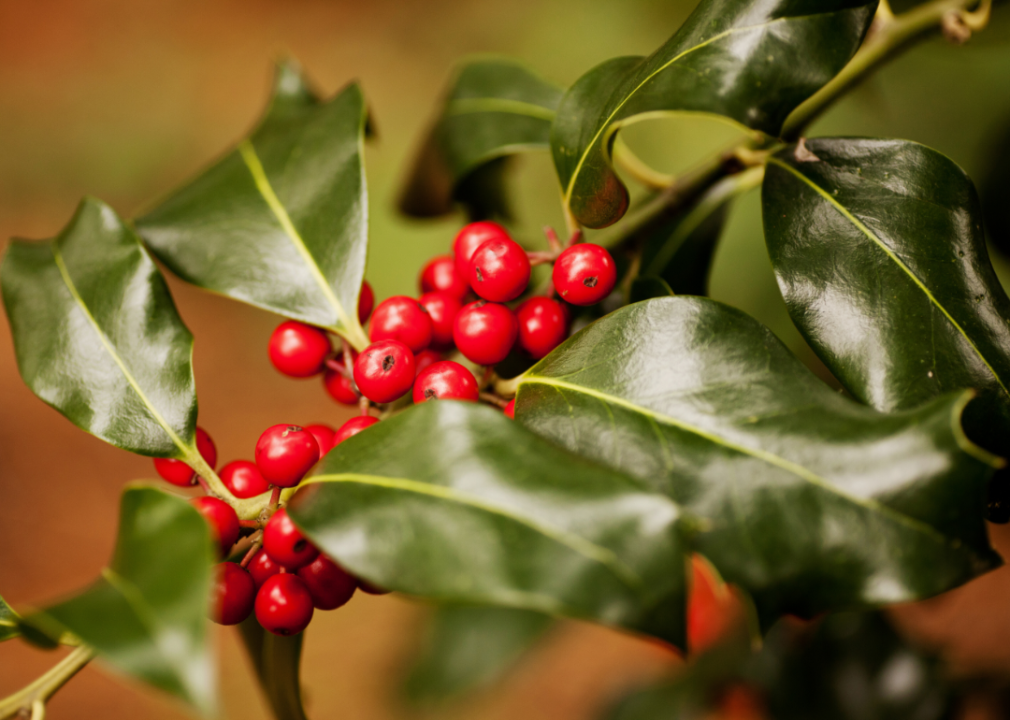
Canva
Holly
Several varieties of holly, including American, English, Japanese, and Christmas, are poisonous to dogs—and it’s not just the bright red berries that cause problems. All parts of the plant contain saponins, a toxin that can be deadly to dogs, so be on the lookout for this popular shrub.
Used in landscaping, holly has stiff and spiny leaves, and though it’s thought to be a Christmas plant (the trademark red berries come in fall and winter), holly also blooms a small, greenish-white flower in the summer, which might attract a dog’s attention. As is often the case with poisoning, the severity of the symptoms depends on many factors—the type of holly, the size of the dog, and the part of the plant eaten. If it’s one of the spiny leaves, stomach pain may result, but other symptoms from holly consumption include lip-smacking, drooling, head-shaking, vomiting, and diarrhea.
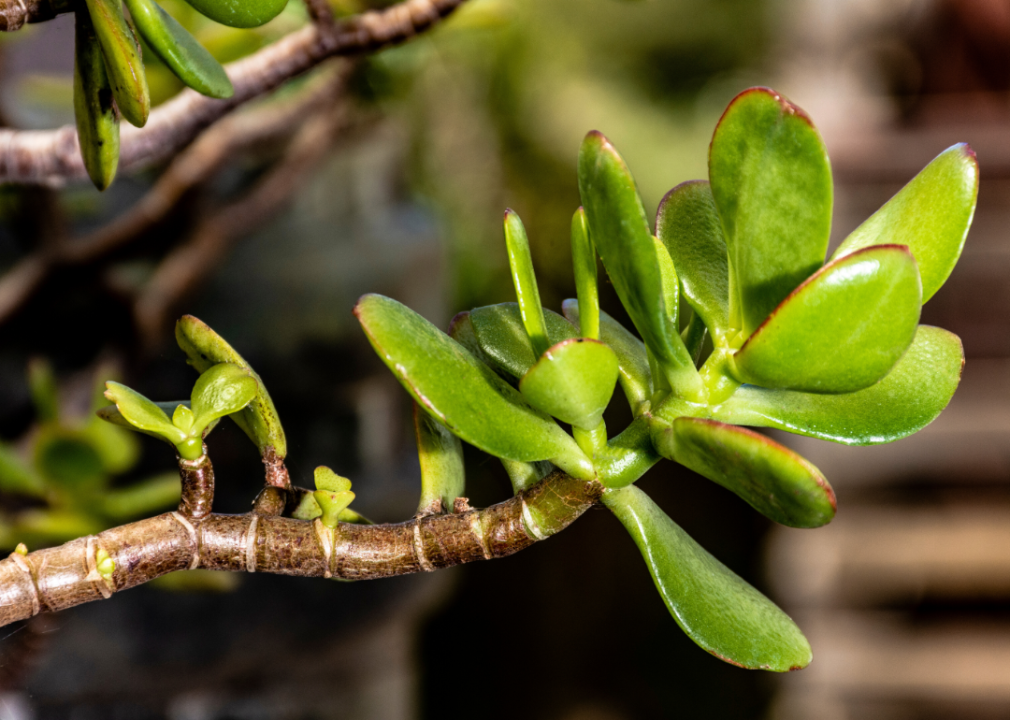
Canva
Jade plant
While mostly considered a houseplant in the U.S., this fabulous succulent can survive outdoors in warmer, more tropical regions like South Florida and Southern California. On walks at the park, its thick leaves seem to beckon for bites but hold dogs back!
According to the Pet Poison Helpline, eating the leaves can cause stomach and intestinal problems, lethargy, and a stumbling gait. Thankfully, exposure usually results in only mild clinical signs that resolve without medical interventions. However, seeking the advice of someone in veterinary care is still recommended.
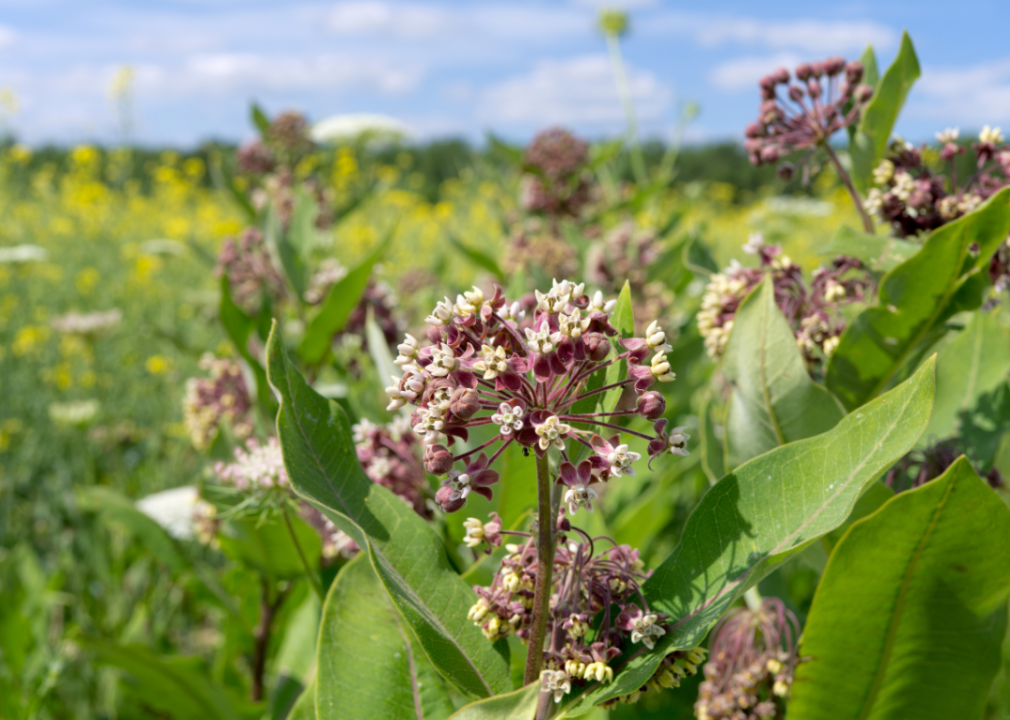
Canva
Milkweed
Common milkweed grows across the U.S., and people plant it in their yards and gardens to bring butterflies, but the thick, white sap the plant is named for contains a cardiac glycoside compound toxic to dogs and other animals. If you snap a stem or one of the plant’s narrow leaves, this “milk” oozes out—and into the body of the curious dog who just took a bite. Since the toxic acts on the cardiac system, expect to see symptoms such as abnormal heart rates and rhythms, as well as pupil dilation, seizure, and collapse.
If you’re unsure how to spot milkweed, it flowers in the summer, so look for bees and butterflies, oval leaves, and teardrop-shaped seed pods. If you suspect your dog has found and eaten some, immediately seek medical help from a vet or animal hospital.
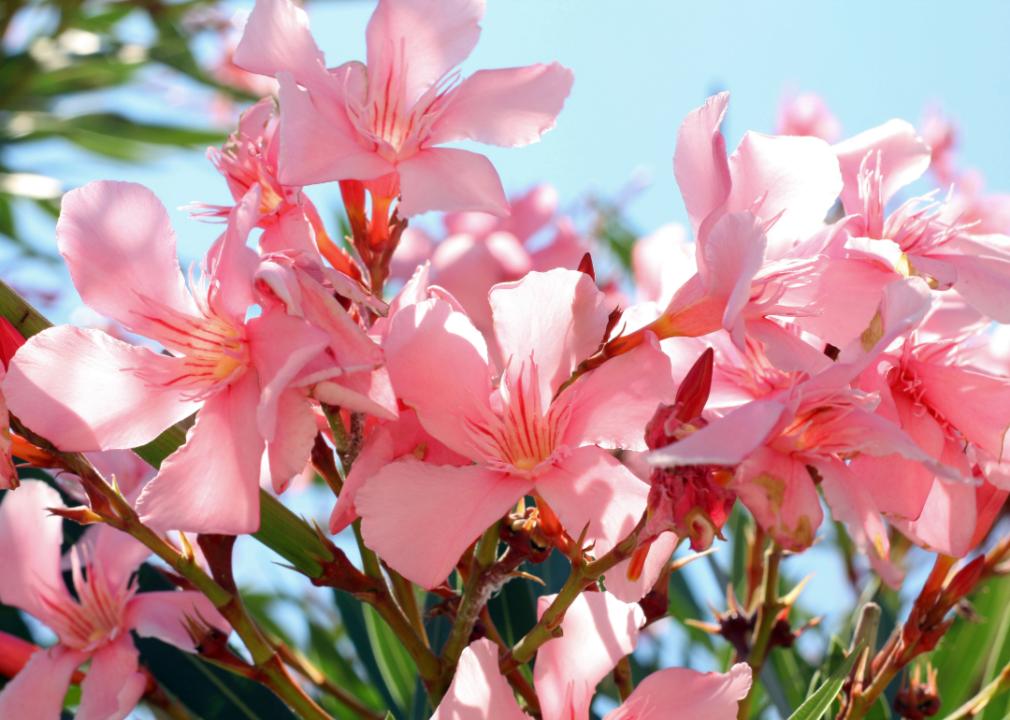
Canva
Oleander
Native to the Mediterranean region, oleander is another flowering shrub often used in landscaping or found in the wild along floodplains. It’s a tough plant that can flourish in dry soil, and when it flowers in the early summer, the blooms come in gorgeous clusters of color that can be pink, red, white, yellow, and peach. These flowers stay for a long while, attracting the attention of both humans and dogs, although all of us should be wary: oleander is extremely poisonous to humans and pets.
In fact, the U.S. Forest Service identifies at least 10 different cardiac glycoside compounds in the plant—even the smoke from burning oleander clippings is toxic. Great caution should be exercised around these plants—people should always wear gloves to trim or tend to them, and pets should be kept far away.
Story editing by Carren Jao. Additional editing by Kelly Glass and Elisa Huang. Copy editing by Paris Close. Photo selection by Lacy Kerrick.
This story originally appeared on Ollie and was produced and distributed in partnership with Stacker Studio.
